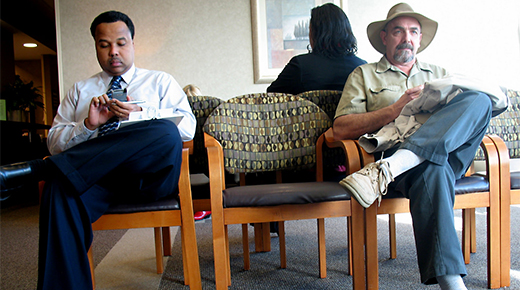Flickr/Frances1972
Patients often wait weeks or months for medical appointments. Canada’s Fraser Institute recently reported that Canadians typically wait 10 weeks to see specialists. Long wait times are one reason Canada ranks behind other developed countries in healthcare quality.
|
ADVERTISEMENT |
In the United States, waits are shorter but also increasing. Merritt Hawkins reported an average wait of 24 days in its 2017 sample, up 30 percent from 2014.
When they finally arrive at physicians’ offices, patients in both countries often face further delays. They may spend substantial periods in the waiting room, despite having specific appointment times—it’s something we love to complain about.
…

Add new comment